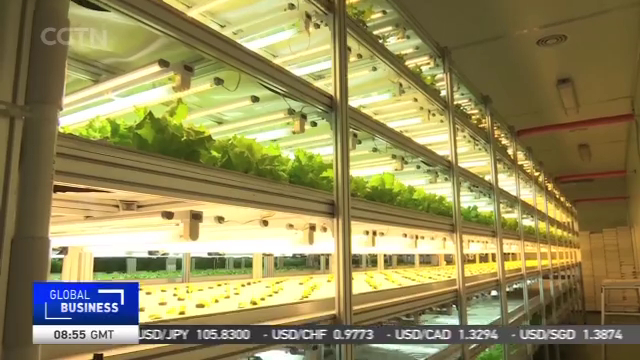
17:23, 26-Aug-2019
Horticulture LED Markets: Demand rises due to popularity of smart farms
Updated
17:34, 26-Aug-2019

We all know plants and trees need water and sunlight to grow. But as the popularity of indoor farming and smart farms rises, demand for dependable lighting sources is also on the rise. Much of the growth is being driven by horticultural LED light bulbs. Shane Hahm reports.
Tons of vegetables are grown in this smart farm every year. But not a speck of natural sunlight is used. That's because these plants rely on LED light sources that are designed to mimic the sun's rays.
KIM SUNG-UN, SENIOR MANAGER FARM8 CO. LTD. "We try to provide the optimal, artificial lighting that a vegetable would need. If a plant would take 50 days to grow outdoors, we can grow in about 35 days."
Farm8 is a leading South Korean agricultural cultivator that produces and distributes salad ingredients. Everything from lettuce to sprouts are grown in these vertical farm shelves. This one room alone at about 200 square meters can generate up to 10,000 dollars a month in revenue. All with the help of a consistent light source using LED technology.
SHANE HAHM SEOUL "The type of light a plant is exposed to will determine how it grows. Different wavelengths will affect a plant's taste and nutritional content. So, it's a matter of finding a vegetable's optimized wavelength, or what is known as the ideal lighting recipe."
KIM SUNG-UN, SENIOR MANAGER FARM8 CO. LTD. "We can arrange LED memory chips to create a plant's optimized spectrum by tuning the RGB values, as well as the PPFD, or Photosynthetic Photon Flux Density."
Semiconductors are the main source that power LED lights. South Korean companies produce nearly two-thirds of the world's memory chips. That's why local companies are driving growth in the global LED industry for horticulture, which is expected to reach over 120 billion dollars over the next several years.
WILL CHUNG, LED PRODUCT MANAGER SAMSUNG ELECTRONICS "We see future opportunities in smart lighting and converging solutions with AI. We're continuing to develop and invest in new lighting sources that focus on helping plants grow in a smarter way."
Horticultural LED lights are more cost-efficient than other artificial light sources. And as global demand increases for healthier alternative food ingredients, LED technology will be lighting a path forward.
SITEMAP
Copyright © 2018 CGTN. Beijing ICP prepared NO.16065310-3
Copyright © 2018 CGTN. Beijing ICP prepared NO.16065310-3